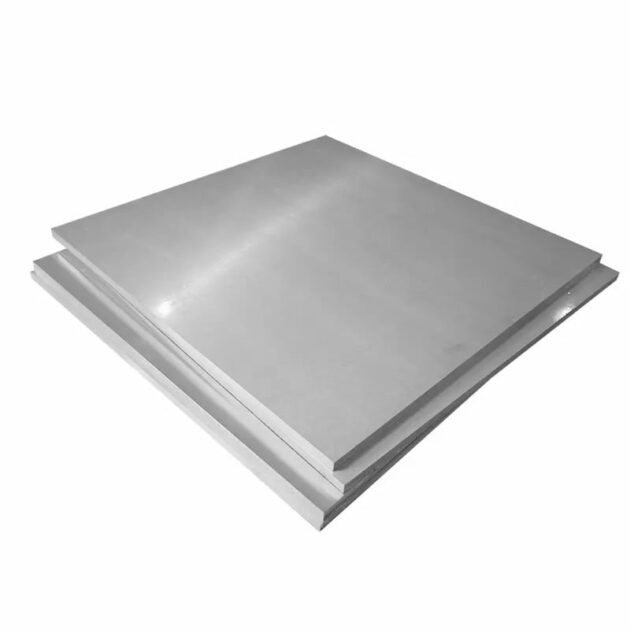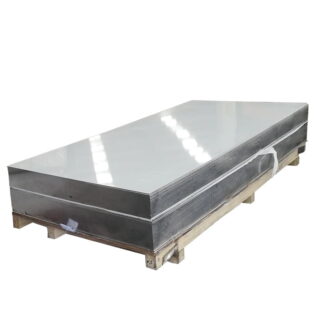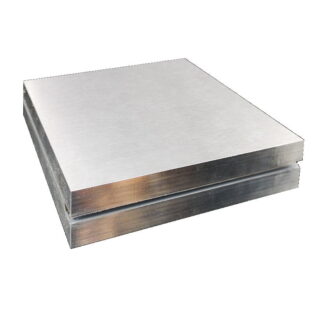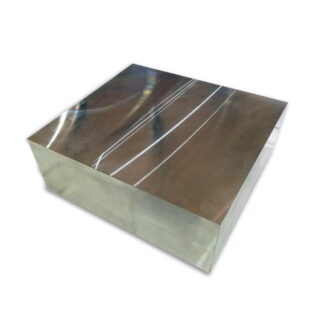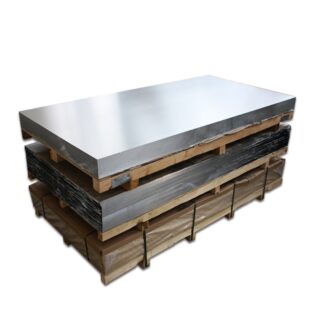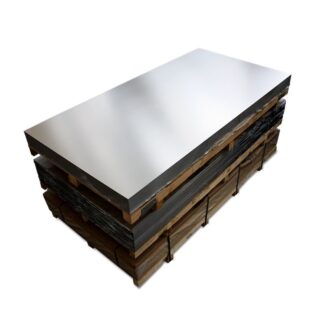2024 Aluminum Alloy Product Description:
Conforms to relevant international standards for aluminum alloys.
Composition: Mainly composed of copper as the primary alloying element, with smaller amounts of magnesium and manganese.
Strength: Known for its high strength-to-weight ratio, with excellent fatigue resistance.
Applications:
Widely used in aerospace applications, including aircraft structures and components.
Also used in high-stress structural applications such as bike frames and automotive parts.
Properties:
Good machinability in the heat-treated condition.
Moderate corrosion resistance.
Specifications:
Density typically around 2.78 g/cm³.
2024 Aluminum Alloy Product Introduction
2024 aluminum alloy is a high-strength aerospace-grade material known for its excellent strength-to-weight ratio and good machinability. This article provides a comprehensive overview of 2024 alloy, covering its chemical composition, mechanical properties, performance characteristics at different temperatures, industry applications, shapes and sizes, production standards, welding and processing capabilities, advantages and disadvantages, and a comparison with similar alloys.
2024 Chemical Composition
2024 aluminum alloy primarily consists of:
| Element | Composition (%) |
|---|---|
| Aluminum (Al) | Balance |
| Copper (Cu) | 3.8 – 4.9 |
| Manganese (Mn) | 0.3 – 0.9 |
| Silicon (Si) | 0.5 max |
| Iron (Fe) | 0.5 max |
| Magnesium (Mg) | 1.2 – 1.8 |
| Zinc (Zn) | 0.25 max |
| Titanium (Ti) | 0.15 max |
2024 Mechanical Properties
2024 aluminum alloy exhibits impressive mechanical properties suitable for high-performance applications:
| Property | Value |
|---|---|
| Tensile Strength, ksi (MPa) | 68 (470) min |
| Yield Strength (0.2% offset), ksi (MPa) | 47 (325) min |
| Elongation (% in 2 inches) | 20 – 30 |
| Hardness, Brinell (HB) | 120 |
2024 Performance Characteristics
2024 aluminum alloy offers several performance advantages:
- High Strength-to-Weight Ratio: Provides high strength comparable to steel while being lightweight, suitable for aerospace and automotive applications.
- Good Machinability: Exhibits good machinability, making it easier to shape into various components.
- Moderate Corrosion Resistance: Offers moderate resistance to corrosion but can be susceptible to stress corrosion cracking.
Industry Applications
2024 aluminum alloy is widely used in industries requiring high strength and durability:
| Industry Sector | Applications |
|---|---|
| Aerospace | Aircraft structures, wing and fuselage skins, bulkheads, and structural components. |
| Automotive | High-performance car parts, including wheels, pistons, and structural elements. |
| Military | Military aircraft components, missile parts, and structural components. |
2024 Shapes and Sizes
2024 aluminum alloy is available in various forms and sizes:
- Forms: Sheets, plates, bars, forgings, and extrusions.
- Sizes: Thickness ranging from 0.2 mm to 200 mm for plates, and diameter ranging from 6 mm to 300 mm for round bars.
Production Standards
2024 aluminum alloy conforms to international production standards ensuring quality and reliability:
| Product Form | Shapes Available | Sizes Available | Production Standards |
|---|---|---|---|
| Plates/Sheets | Sheets, Plates | Thickness: 0.2 mm – 200 mm | ASTM B209, AMS QQ-A-250/4 |
| Bars/Rods | Round bars, Square bars | Diameter: 6 mm – 300 mm | ASTM B211, AMS QQ-A-225/6 |
| Extrusions | Custom shapes, profiles | Various sizes | ASTM B221 |
Welding and Processing
2024 aluminum alloy offers moderate weldability and processing characteristics:
- Welding: Can be welded using conventional methods such as TIG and MIG welding, with proper filler materials and techniques to avoid cracking.
- Machinability: Machined in the T3 or T4 temper (solution heat treated and naturally aged) using carbide tools and appropriate cutting fluids.
Advantages and Disadvantages
| Aspect | Details |
|---|---|
| Advantages | High strength-to-weight ratio, good machinability, and relatively low cost compared to other high-strength alloys. |
| Disadvantages | Moderate corrosion resistance, particularly susceptible to stress corrosion cracking. |
Comparison with Similar Alloys
2024 aluminum alloy is often compared with other high-strength aluminum alloys such as 7075 and 6061. Here’s a brief comparison:
| Alloy Type/Property | 2024 Alloy | 7075 Alloy | 6061 Alloy |
|---|---|---|---|
| Chemical Composition | Higher copper content for improved strength. | Higher zinc and magnesium content for improved strength and corrosion resistance. | Higher magnesium and silicon content for good corrosion resistance and moderate strength. |
| Mechanical Properties | Moderate strength and good fatigue resistance. | Higher tensile and yield strength, good fatigue resistance. | Good balance of strength and corrosion resistance, lower tensile strength compared to 2024 and 7075. |
| Applications | Aerospace structures, automotive parts requiring high strength and machinability. | Aerospace components requiring high strength and corrosion resistance. | Structural components, marine fittings, and automotive parts. |
This detailed article introduces 2024 aluminum alloy, highlighting its chemical composition, mechanical properties, performance characteristics, industry applications, available forms and sizes, production standards, welding and processing capabilities, as well as advantages, disadvantages, and a comparison with similar alloys. Engineers and professionals seeking a high-strength aluminum alloy for aerospace, automotive, and military applications will find 2024 alloy suitable for its robustness and machinability.
